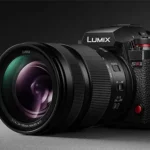Photographer Phil Steele explores the ongoing debate between using smartphones and traditional DSLR or mirrorless cameras for photography. As smartphone cameras continue to improve, many photographers wonder if there’s still a place for their larger, more expensive cameras. In this blog post, we will discuss the key takeaways from Phil Steele’s video comparing the two options:
Key Takeaways:
Smartphone cameras have come a long way:
- Produce vibrant, sharp, and well-lit images straight out of the camera.
- Offer automatic HDR (high dynamic range) capabilities.
- Improved shallow depth-of-field simulation.
- Impressive low-light photography performance.
- Superior video capabilities, including stabilization and slow motion.
- Easy-to-use photo editing tools right on the device.
One of the most significant advancements in smartphone camera technology is the ability to simulate a shallow depth of field. This effect, traditionally associated with professional photography, creates a sharp focus on the subject while blurring the background and foreground. It is achieved using large lenses with wide apertures on DSLR and mirrorless cameras. However, the advent of computational photography and AI has allowed smartphones to mimic this effect to a remarkable extent.
Advantages of DSLR and mirrorless cameras:
- Superior image resolution due to larger sensors.
- More natural and smoother depth-of-field compared to smartphone simulations.
- Better skin tones and realistic textures.
- Higher quality bokeh (background blur) effect.
- More accurate low-light performance.
The future of photography:
- Smartphone cameras will continue to improve with advances in computational photography and AI.
- DSLR and mirrorless cameras will also evolve, adding more intelligence and features.
- The laws of physics will still favor larger sensors and lenses found in traditional cameras.
Conclusion:
While smartphone cameras have made significant advancements, there is still a place for DSLR and mirrorless cameras, especially for serious photographers. The inherent advantages of larger lenses and sensors provide a level of quality and control that smartphones have yet to match. As technology continues to evolve, both types of cameras will improve, and photographers should consider their needs and preferences when choosing the best tool for their work.
For further training: Steeletraining Photography Courses
Like This Article?
Don't Miss The Next One!
Join over 100,000 photographers of all experience levels who receive our free photography tips and articles to stay current:






